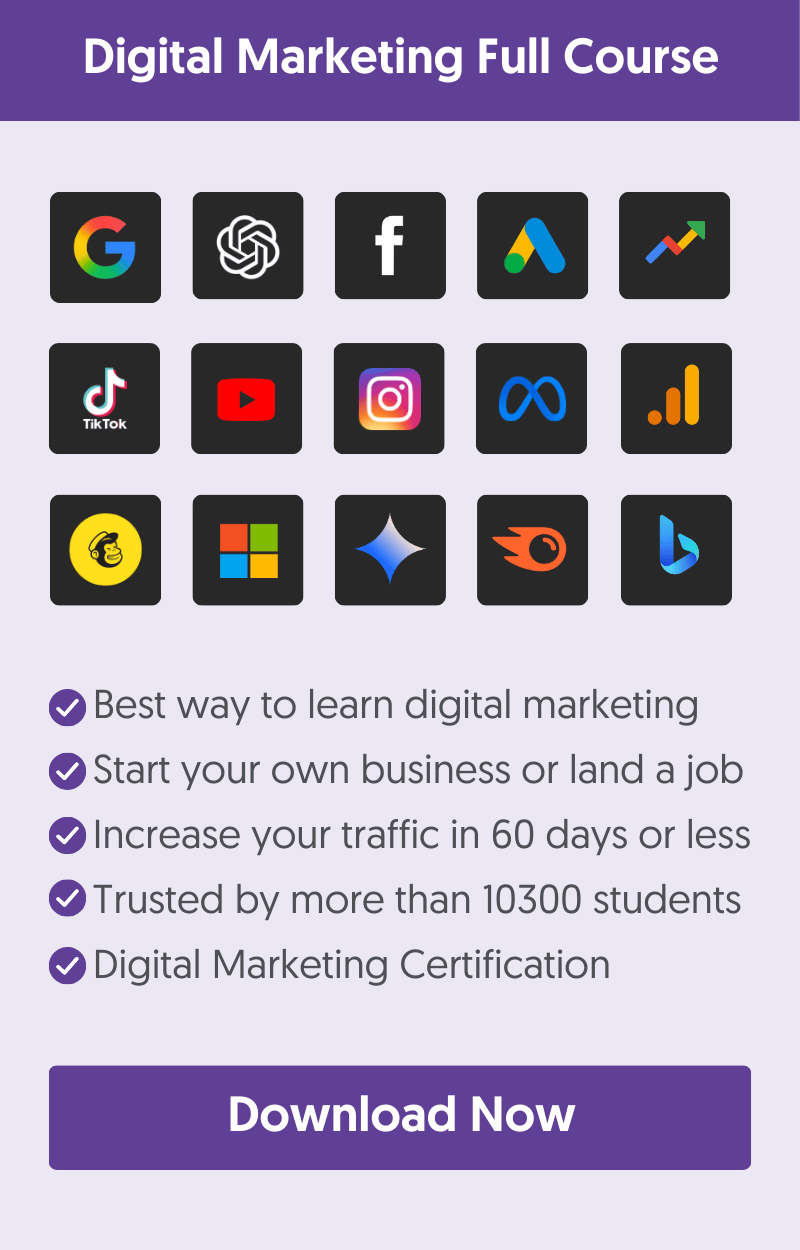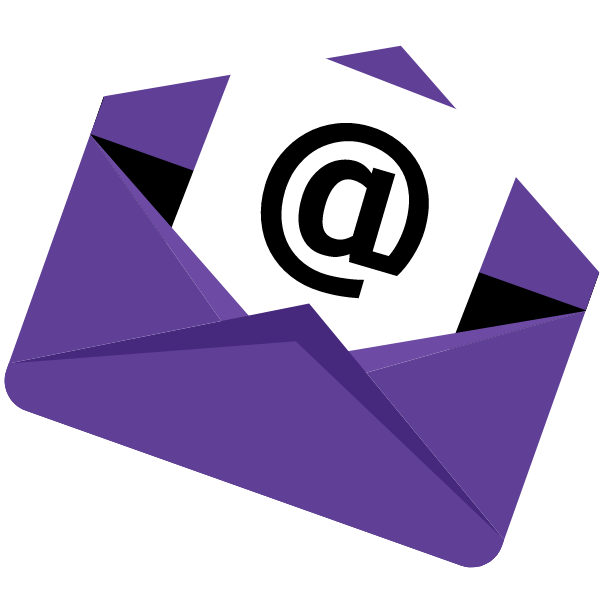I can tell you from experience that once you’ve landed a few clients and made your first money, your mind will start thinking how to grow and turn your freelance business into a 'real business'.
To scale a freelance digital marketing business, focus on narrowing your niche, building your personal brand, developing new skills, and expanding your network. Look for ways to offer additional services, adapt to industry changes, and refine your pricing over time. Most importantly, use proven digital marketing tactics like SEO, social media, and AI to attract more and better clients consistently.
Let's break this down into actionable steps:
Tip 1: Niche Down
If you want to grow faster, start by narrowing your focus. It may sound weird, but choosing a niche makes it easier to attract better clients, charge higher rates, and optimize how you work.
Start by identifying a profitable niche, which could be a specific industry (like ecommerce or SaaS) or a type of client (like local businesses).
Then, choose a specialized service that solves a key problem they have, like SEO for ecommerce, or Google Ads for dentists.
You can even take it a step further and standardize your services, which means offering the same core deliverables, strategy, and process across clients. This saves you time, reduces project complexity, and makes it easier to train others and scale up.
Tip 2: Build a Personal Brand or Authority in Your Niche
Over time, focusing on one niche will help you build a strong brand in that industry, and your name becomes associated with results. That’s how clients start coming to you, which makes scaling even easier.
Start by creating a consistent visual identity, clear messaging, and a professional online presence.
Use the same photo, bio, logo, and brand colors across your website and social profiles so people remember you. Your goal is to become instantly recognizable and trustworthy in your space.
Then, focus on building an audience. You can:
- Use Facebook or Google Ads to promote a lead magnet or case study that speaks directly to your niche
- Create a blog on your website and publish industry-related content that helps your ideal client solve real problems
- Pitch podcasters or collaborate with influencers in your space to expand your reach and build credibility
- Join or speak at niche events, local meetups, or virtual summits where your target audience hangs out
The more you show up, the more it warms up leads before they contact you, and this means closing deals faster and charging for premium rates.
Tip 3: Use AI For Automation And Growth
AI isn’t just a tool to help you work faster. For freelancers, it’s a growth opportunity.
If you want to scale your freelance business, you need to do two things:
- Use AI to scale without hiring a team
- Start offering AI-powered solutions to your clients.
Use AI to scale without hiring a team
One of the biggest challenges freelancers face when scaling is hitting a time limit. If you do everything yourself, you can’t take on more clients, but hiring too soon adds cost and complexity.
That's where AI marketing automation comes into play.
Use tools like n8n or Make to automate common marketing tasks, such as posting content to social media networks, conducting keyword research, or creating short videos for YouTube and TikTok.
Use ChatGPT for content ideas, writing emails, creating client reports, and even content creation.
There are many opportunities, and if you don't know them yet, that should be the top priority on your to-do list.
Hint: Our digital marketing course includes dedicated lessons on using AI in Digital Marketing, which is an excellent introduction for beginners to AI.
Start offering AI-powered solutions to your clients.
Clients are hearing about AI too, and many are overwhelmed. They know it’s powerful but have no idea how to use it in their business. That’s where you come in.
Start learning how to:
- Set up AI automated systems for clients
- Build automated sales funnels using AI
- Use AI to write code for free tools you can use on customer websites to get traffic leads
This will become the next wave of demand. If you can position yourself as someone who understands AI and applies it in real business scenarios, you’ll have more opportunities to land clients willing to pay higher rates.
Tip 4: Focus on Profitable Clients and Raise Rates Strategically
When you freelance for some time, you'll soon realise that you don't want more clients to scale, but you need the right ones. This is because not all clients or projects are equally profitable, and figuring out which ones give you the highest return is the key to growth.
You can start by reviewing your past projects. Ask yourself:
- Which clients were the most profitable?
- Which projects had the best balance of effort vs. reward?
- Where did you deliver the most value without burning out?
That’s where your focus should go. Once you know what’s working, start looking for more clients like that.
At the same time, raise your rates strategically, especially for new clients and proposals. As your skills grow and you improve at delivering outcomes, your pricing should reflect that.
Don’t make big changes, but test small increases and watch how future clients respond.
I raised my prices every time I was fully engaged on existing projects. Instead of hiring new people and increasing my costs, I charged more for new projects and worked fewer hours.
So, growth is not always about getting more clients or hiring more people; it's about making more revenue and profit.
Tip 5: Earn More Per Client By Expanding Your Service Offerings
It costs less time, energy, and effort to keep working with someone who already trusts you than it does to win over someone new. So instead of constantly marketing yourself to new leads, look for ways to increase the value you provide to your existing clients.
For example, if you manage SEO, could you also offer Google Ads for them? If you’re running paid ads, could you offer landing page optimization or email follow-ups?
These add-ons don’t need to be huge but should solve a real problem. You can position them as upsells, ongoing support, or package upgrades.
Tip 6: Productize One of Your Services
Productizing means turning a service into a product. A product has a clearly defined scope with a fixed price. For example:
- A $500 SEO Audit with a 5-day turnaround
- A Facebook Ads Starter Pack that includes campaign setup, 2 ads, and performance tracking
- A Content Strategy Plan for new blogs, delivered in one week
Clients love these offers because they know exactly what they’re getting and how much it costs. You’ll love them because they’re easier to sell and easier to automate using AI or by assigning this task to an employee.
Start by picking a service you’ve delivered multiple times, breaking it into several processes, and documenting it so that anyone can follow the steps and do it. It requires some work, but with the help of AI, it's now more possible than ever.
This small change can make a big difference in how fast you can scale.
Tip 7: Keep Learning New Skills
Digital marketing is a fast-changing industry. New platforms, strategies, and tools appear constantly, and freelancers who succeed are the ones who follow these changes and adapt.
AI is a perfect example. Freelance marketers who don't develop AI skills and continue using traditional digital marketing techniques will soon become obsolete.
The key here is not to try to learn everything at once, but to focus on learning skills that:
- Help you get better results for your existing clients
- Let you charge more for your services
- Open new service opportunities in your niche
For example, if you’re in paid ads, learning how to code landing pages or conversion rate optimization can make your results stronger.
Set a simple learning goal each quarter. This could be learning a new tool, skill, or area to deepen. Enroll in a course, read case studies, or build a small internal project to test what you’re learning.
Tip 8: Work On Client Retention
When you build strong client relationships, retention becomes your growth engine. Fewer sales calls, more recurring revenue, and a business that’s much easier to manage.
The biggest factor is communication. Most clients may decide to leave because they don’t feel updated, valued, or in the loop.
Here’s how to change that:
- Set clear expectations from day one: timelines, deliverables, and communication channels
- Check in regularly, even if there’s nothing major to report, just letting them know you’re on top of things builds trust
- Send monthly reports or updates that highlight wins, explain what’s being worked on, and what’s next
- Ask for feedback and act on it. Show them you’re listening and improving
- Look for new opportunities to help them, whether it’s a small fix, a new idea, or something outside the original scope
You want to be seen not just as a freelancer, but as a business partner and someone they can rely on for all their marketing needs.
Tip 9: Manage Your Time and Maintain Balance
When working on your own business, it's easy to forget about work-life balance. While this is okay initially, you will likely reach a point where you burn out completely.
If you want to scale, you need to avoid that.
Start by setting clear boundaries. Define your work hours and communicate them to clients from the start. You don’t need to be available 24/7 to be professional. Clients respect freelancers who respect their own time.
Next, schedule regular time off, not just when you’re exhausted. Plan for breaks, long weekends, and vacations. Add them to your calendar just like client work. Rest is productive when it helps you come back focused.
When you manage your energy, not just your time, you do better work, make better decisions, and create opportunities to grow, instead of always catching up.
Tip 10: Move from Freelancer to Agency Owner
A common path for successful freelancers is to start a digital marketing agency.
That doesn’t mean hiring a big team overnight. It means slowly building your clientele and creating processes that other people can follow, so you’re no longer the one doing everything.
The first step is what was already described on tip 6 above, which relates to productizing your services.
Handle the execution of these tasks to other people and focus your time on strategy, client communication, and growth.
You’ll also need to shift your mindset. You’re no longer just delivering work as a freelancer, but you’re building a business. That means you should start thinking ahead: What kind of team do you need? What kind of clients do you want? What will your brand stand for?
This transition to an agency isn’t for everyone, and it's not mandatory for growth. You can still make money working alone as a freelancer, but you need to take that step if you want to become a manager instead of an implementor.
What to Do Next
If you're still reading this article, you're probably ready to take the next step in your freelance career.
Start by picking one tip from this list that fits where you are right now. Maybe it’s narrowing your niche, testing out a productized offer, or using AI to streamline your work. Small moves, done consistently, lead to real growth.
Don't forget that your ultimate goal isn’t just more clients or money. It’s to create a business that runs smoothly, supports your lifestyle, and gives you freedom to focus on the work you actually enjoy.



